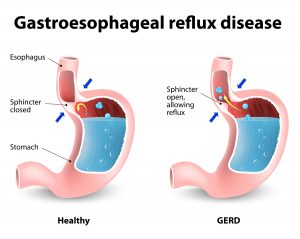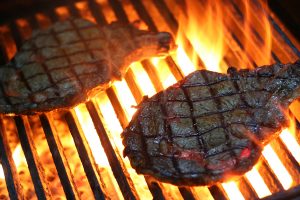Two years ago Kraft’s was in the news and I said then “no more macaroni and cheese”. At that time they promised to make macaroni and cheese more nutritious by removing artificial coloring and artificial flavors. Now they are in the news because industrial chemical phthalates have been found in almost every sample of cheese powder that is used to make macaroni and cheese.
Phthalates are powerful hormone-disrupting chemicals that are toxic to children and pregnant women. Most noteworthy, abnormal brain development and abnormalities of the reproductive system have a connection to prenatal exposure to phthalates. Potentially 725,000 American women of childbearing age are at risk. Should they get pregnant, their babies would be at the receiving end of toxic phthalates. In Europe new regulations about phthalates were introduced in 2011. In contrast, in North America the FDA has been negligent in enforcing legislation to keep the US population free of phthalates in their food.
Background information about phthalates
Phthalates are industrial chemicals that are widely used in cleaning agents like soaps, plastics, rubbers, inks, adhesives and fragrances. Phthalates in plastic materials increases the durability and longevity, but also the flexibility and transparency of plastic.
The Center for Disease Control and Prevention describes on its website how a large percentage of the population has phthalates in their urine. This proves that unsuspecting customers are ingesting phthalates, which potentially poses a tremendous challenge.
In Europe vigorous legislation is in place regarding phthalates. Should they more vigorously legislated in the US?
Effects of phthalates on body
It seems that males are more sensitive to the toxic effects of phthalates than females. Males experience testicular atrophy and shrinking of the prostate gland. The sperm count goes down, which can lead to infertility. Pregnant women are at risk of having babies with genetic defects due to exposure to phthalates. Many cosmetic products contain phthalates. Due to lax FDA supervision there is no labeling on many cosmetics, yet they contain phthalates (lipsticks, make-up).
Apart from infertility issues phthalates are also responsible for allergies, some cases of obesity, asthma and breast cancer.
There are other clinical conditions that have been linked to phthalate exposure. Behavioral issues, autism spectrum disorder, type 2 diabetes, low IQ and neurodevelopmental issues. A lot of these problems could disappear with more awareness of the public, stricter labeling rules of the regulatory agencies and more responsibility shown by manufacturers.
Why nutritionists don’t like macaroni and cheese
Macaroni and cheese belongs into the group of junk foods. In the past it was artificial coloring and artificial flavors that were the concern. Now it came to light that phthalates have contaminated the fat-containing cheese from the packaging. The soft plastic cheese packages contain phthalates and they easily blend with fatty cheese, because phthalates are fat-soluble. This is the reason why I say: no more macaroni and cheese!
From a nutritional point of view macaronis are simply empty starch. The digestive process quickly turns it into sugar and causes a sugar peak in the blood. High blood sugar causes an insulin peak. Repeated insulin peaks show a connection to premature aging, obesity and type 2 diabetes.
Cheese in macaroni and cheese is the cheapest processed cheese. Here is a summary of what macaroni and cheese contains. In this recipe the cheese portion comes from processed cheddar cheese. But in many macaroni and cheese packages the cheese portion comes from of a mix of protein, fat and milk powder and this mix has nothing to do with cheese. It just tastes like cheese. But all of the cheese powder packages have in common that in 29 out of 30 of the packages tested phthalates were contained in the cheese powder.
The package included a plastic coating containing the phthalates. This leeched into the cheese powder, because phthalates are fat-soluble.
No More Macaroni And Cheese: Toxic “food” is non-food
The problem with macaroni and cheese in today’s society is that it is a form of processed food. The more food is processed, the higher the risk that there is a loss of valuable nutrients. Unfortunately with food processing there is the need to use a food container where the food is stored. But up to now nobody thought that the ubiquitous phthalates that keep the plastic material of the food container flexible and longer lasting could pose any threat to our health by leaking into fatty foods.
However, we did have problems with PBA’s not long ago; they were leaking from baby bottles into baby food. The solution was to abandon BPA bottles.
We have to rethink the whole scenario. As this link shows there are many other chemicals in plastic that can also be toxic.
We can work on the food side and avoid as much processed food as possible. Buy fresh ingredients that you bring home and store in your fridge. Avoid plastic bags. Use glass containers as they are safe (not leaking chemicals into food).
What can you do, if you want no more macaroni and cheese?
Stop buying macaroni and cheese as processed food. Buy ingredients to make them yourself at home. Here is a recipe of how to make macaroni and cheese: You may in the past have thought that it is much easier to just buy macaroni and cheese in the store. But this is where the phthalates come in. It is our laziness that allows food processors to slip chemicals into our food that could damage us; and some of these potentially harmful chemicals are phthalates. Phthalates probably slipped into our food unintentionally because they are so extremely fat-soluble that they get into the cheese part of macaroni and cheese.
If you want to eat macaroni and cheese, make it yourself as per the recipe provided with the link above.
But I went one step further. I have abandoned macaroni and cheese altogether. We don’t need the extra insulin response from the macaroni as we digest them. Next I also do not need the extra processed cheese, as the fats are not the healthiest. If I want some cheese, I can cut a few slices from an honest organic cheese that originates from organic milk from cows that were grazing on grass.
I like eating diversified food from many healthy sources.
Conclusion
Sometimes we need to rethink the food that we eat. Do we want to eat macaroni and cheese, because it reminds us of how we grew up? When you hear that processed foods contain toxic phthalates, you may also say as I do: “No more macaroni and cheese!” As I mentioned, if you really want to eat it, cook it yourself from the basic, healthy ingredients. But I decided no more macaroni and cheese for me, because it is not that healthy. There are healthier foods that I’d rather eat instead.
If more of us would shun processed foods, then the food industry would have to adapt to the population’s healthier food habits and come up with healthier products. We also would significantly reduce our exposure to phthalates that find their way into the food chain from food containers. Rethink your food habits and perhaps one day you can agree with me: “I don’t want non-nutritious processed food! No more macaroni and cheese!”





















